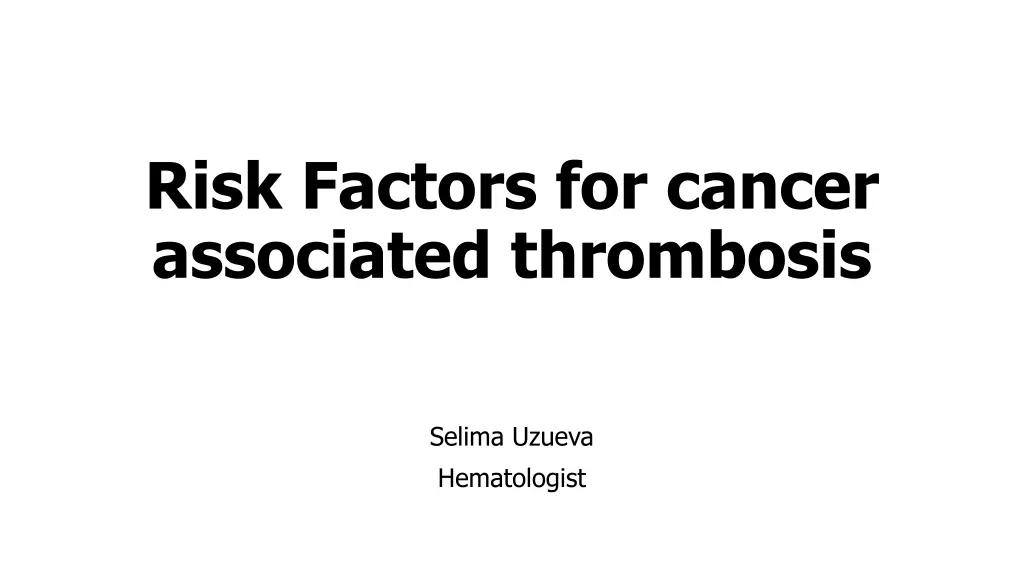
Cancer-Associated Thrombosis Risk Factors
Learn about the risk factors for cancer-associated thrombosis, including tumor factors, treatment factors, and patient factors. Cancer patients are at increased risk of blood clots, which can interfere with treatment and impact overall quality of life.
Download Presentation

Please find below an Image/Link to download the presentation.
The content on the website is provided AS IS for your information and personal use only. It may not be sold, licensed, or shared on other websites without obtaining consent from the author. If you encounter any issues during the download, it is possible that the publisher has removed the file from their server.
You are allowed to download the files provided on this website for personal or commercial use, subject to the condition that they are used lawfully. All files are the property of their respective owners.
The content on the website is provided AS IS for your information and personal use only. It may not be sold, licensed, or shared on other websites without obtaining consent from the author.
E N D
Presentation Transcript
Risk Factors for cancer associated thrombosis Selima Uzueva Hematologist
Blood clotting Injury to blood vessels triggers activation of blood clotting Highly regulated process Blood clotting is switched off once the injured vessels has healed and bleeding has stopped
Risk factors for cancer-associated thrombosis Tumor factors The risk of a blood clot is greater in the first few months after a cancer diagnosis, the time when treatment generally occurs. Some cancers pose a greater risk for blood clots, including cancers involving the pancreas, stomach, brain, lungs, uterus, ovaries, and kidneys, as well as blood cancers, such as lymphoma and myeloma. The higher your cancer stage, the greater your risk for a blood clot.
Risk factors for cancer-associated thrombosis Treatment factors: the administration of chemotherapy and/or hormone therapy, transfusion, surgical interventions, the presence of an indwelling central venous catheter. The specific type of cancer treatment you receive can increase your risk for blood clots. Treatments involving hospitalization, surgery, chemotherapy, treatment with hormones, and catheters (small tubes placed in veins to administer various treatments) can increase your risk for blood clots.
Risk factors for cancer-associated thrombosis Patient factors: previous VTE, family history of VTE, obesity, smoker. Previous blood clot Family history of blood clots or inherited clotting disorder Hospitalization for illness or major surgery, particularly of the pelvis, abdomen, hip, or knee Broken bone or severe muscle injury Serious medical conditions, such as heart and lung diseases, or diabetes Sitting too long, such as traveling for more than 4 hours, especially with legs crossed Other causes of immobility, such as extended bedrest Overweight and obesity Smoking
Thrombosis is a leading cause of illness and death among people with cancer VTE is a common complication among patients with cancer, who account for approximately 20% of all VTE cases. Patients with cancer and VTE are at a markedly increased risk of recurrent VTE and early death. The occurrence of VTE in patients with cancer may interfere with planned chemotherapy regimens, worsen patient quality of life, use scarce health care resources, and increase the risk of mortality.
Strategies to reduce risk thrombosis in cancer Raising awareness among healthcare professionals Raising awareness among patients
If you have any questions please keep it for yourself I m not
